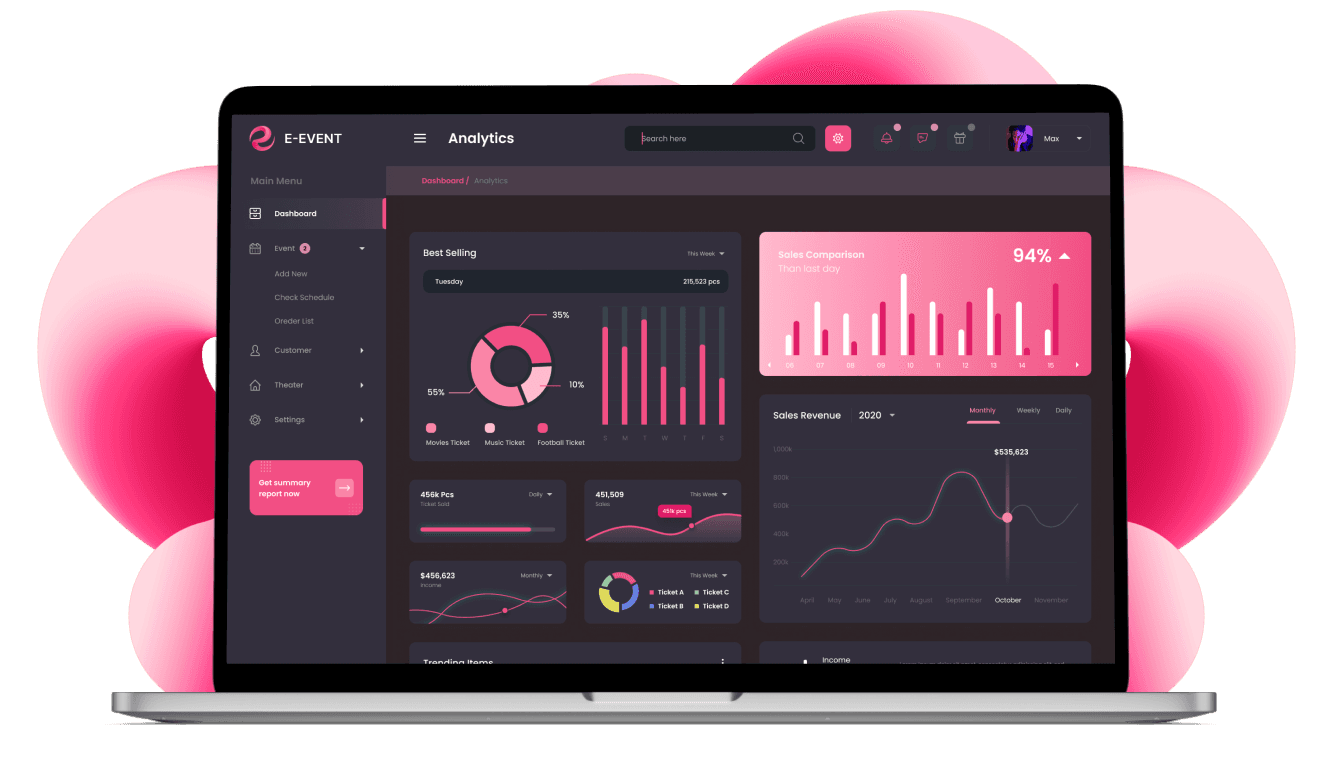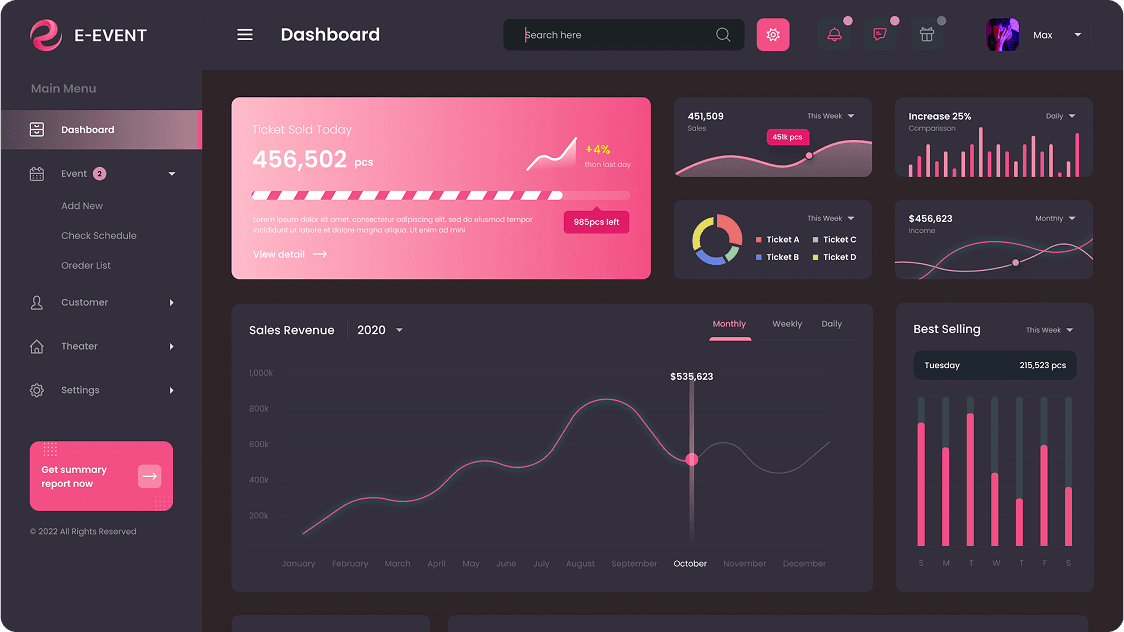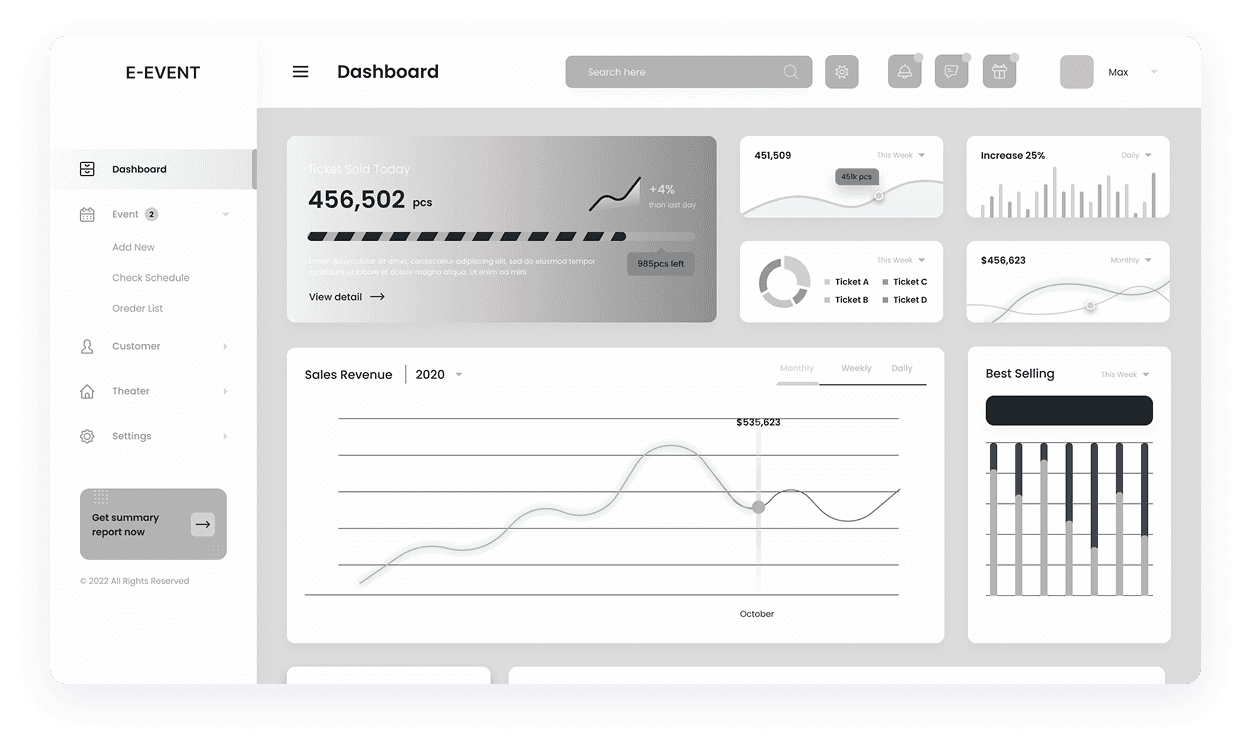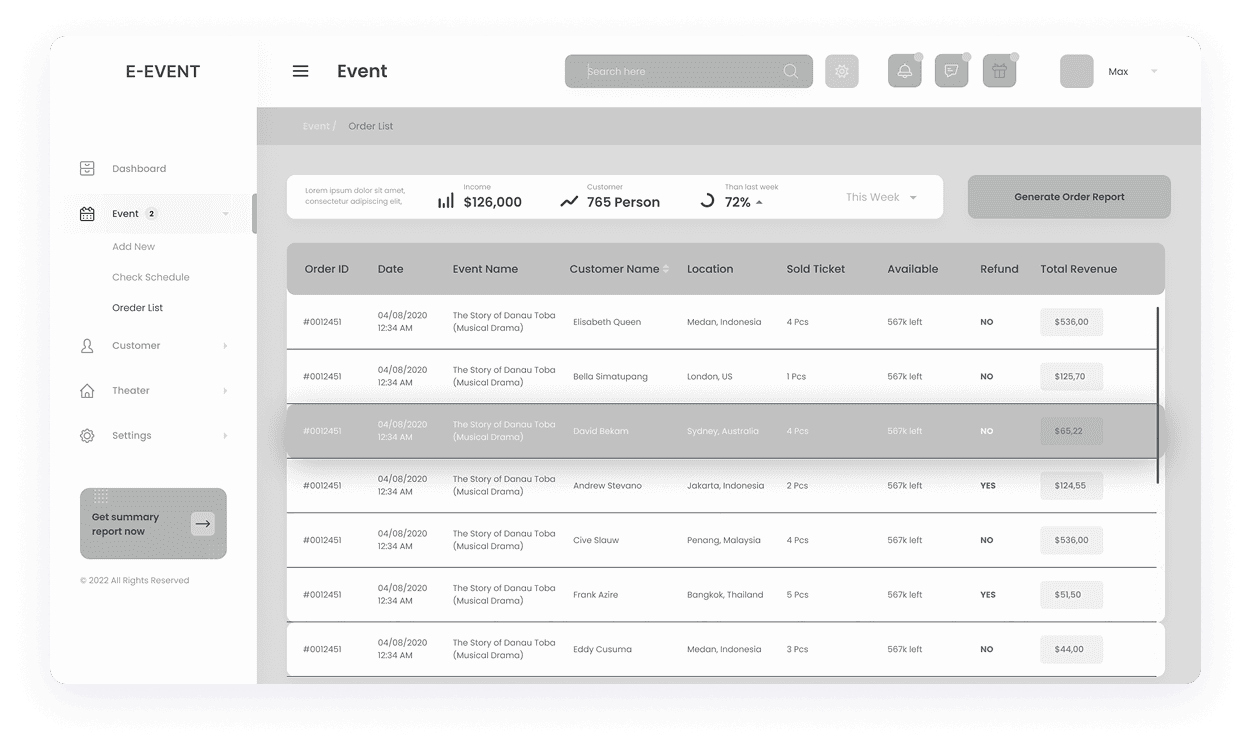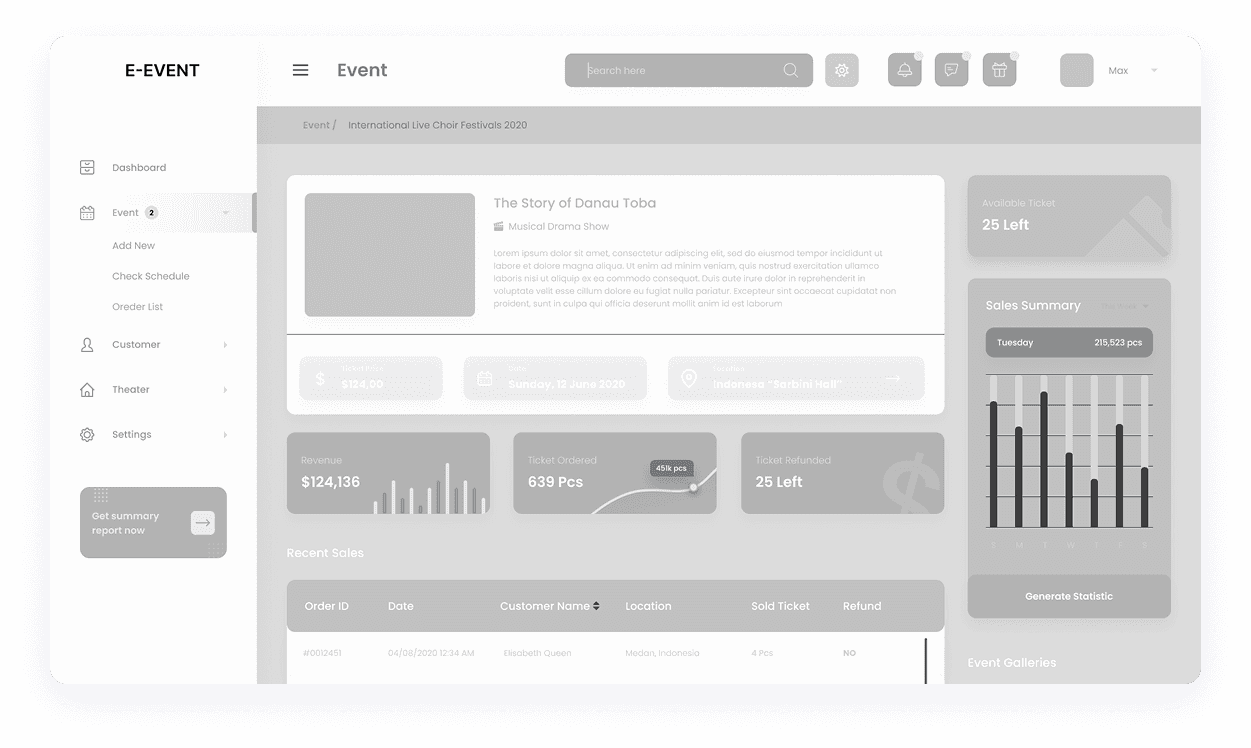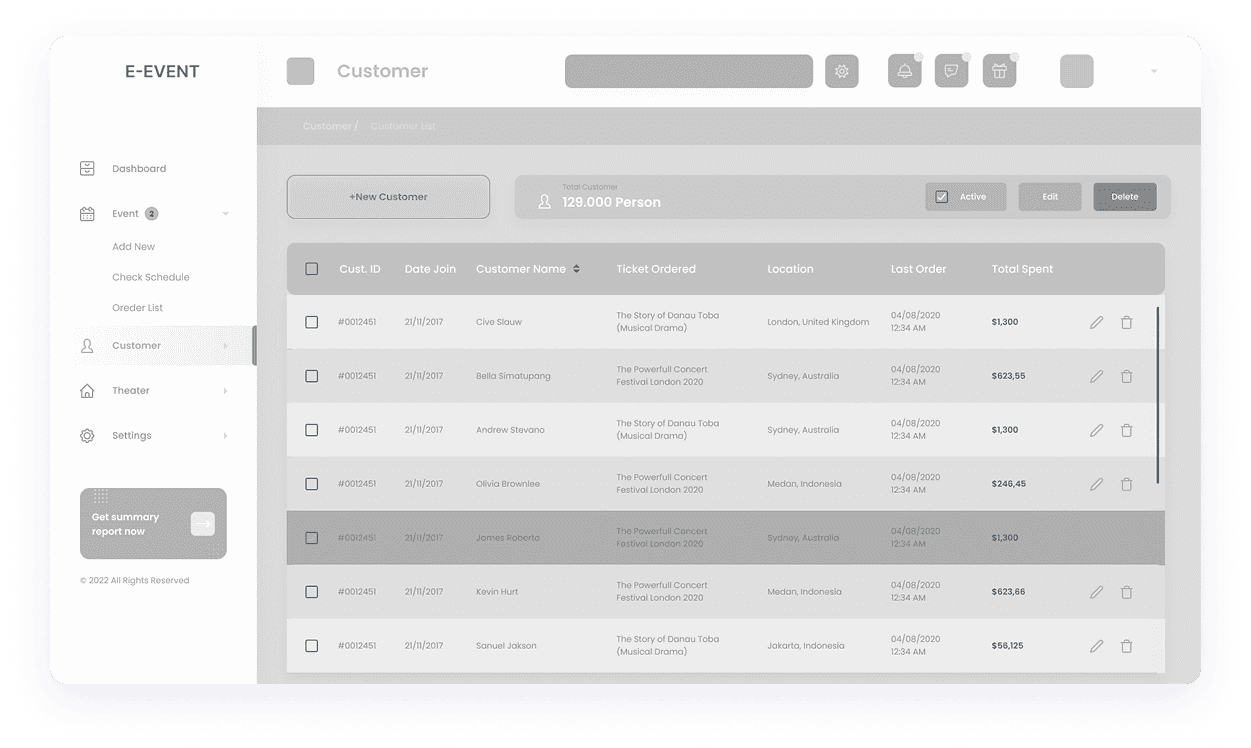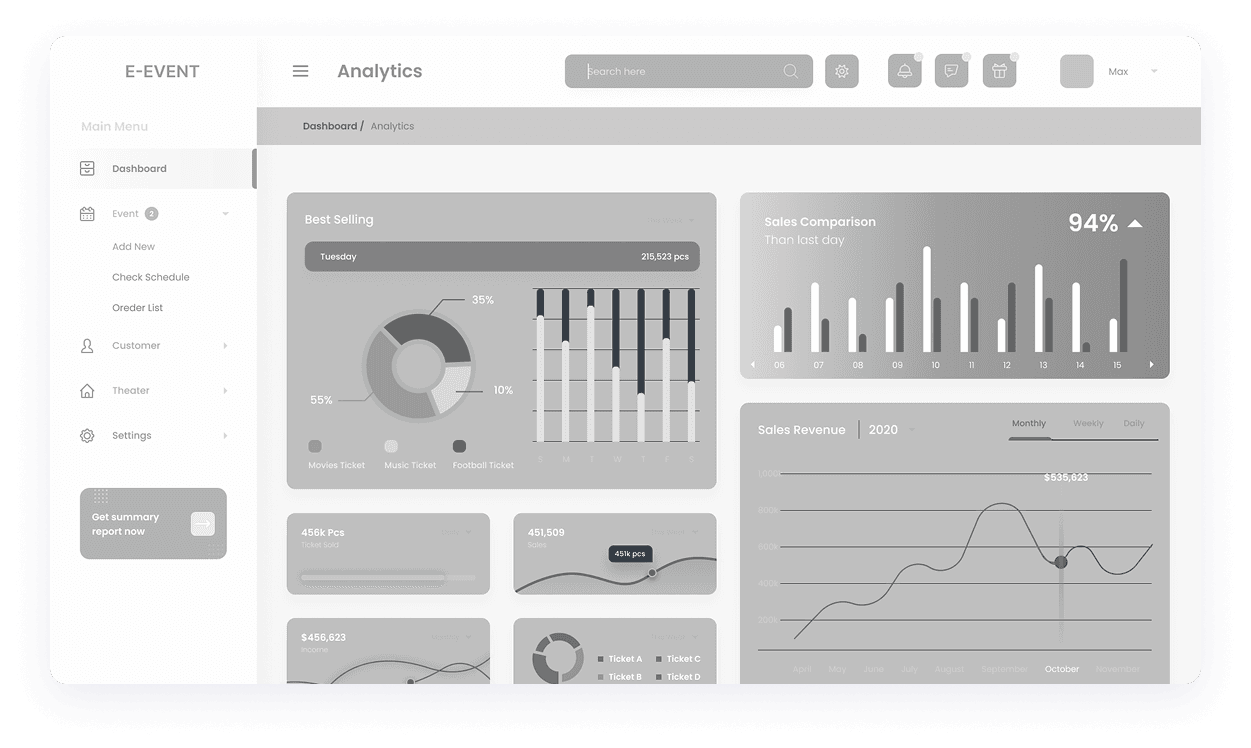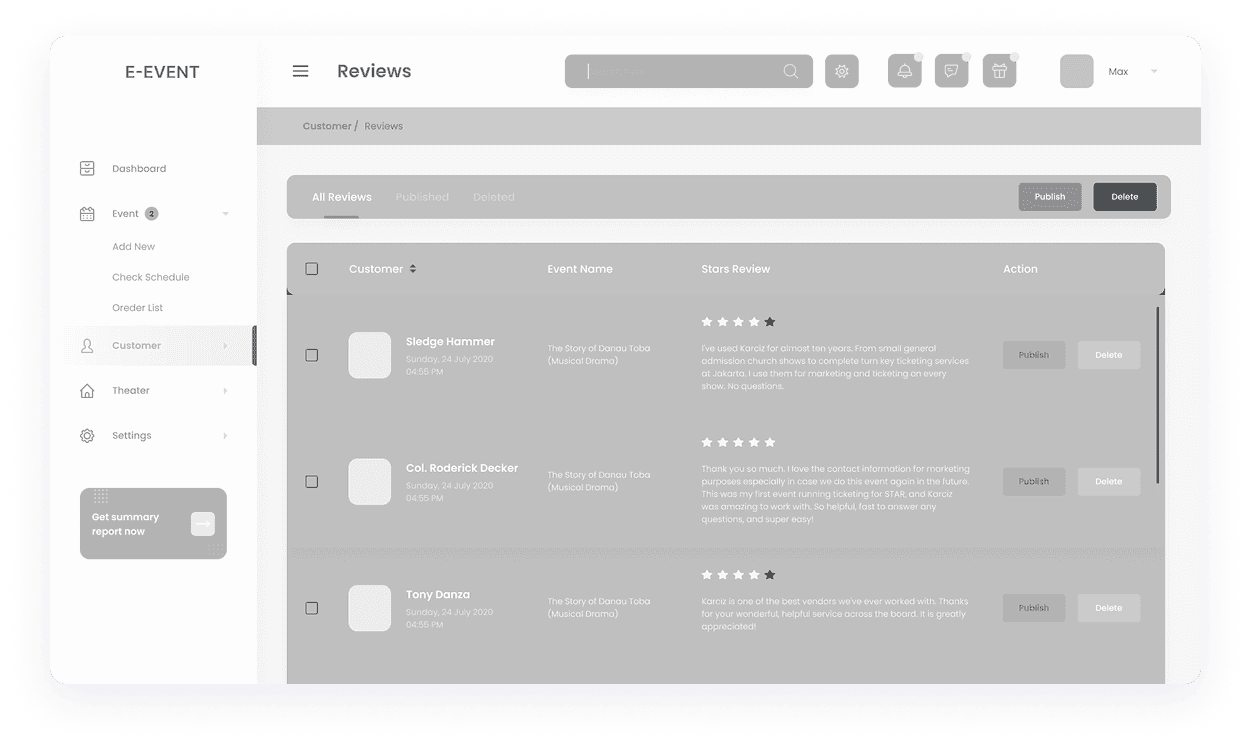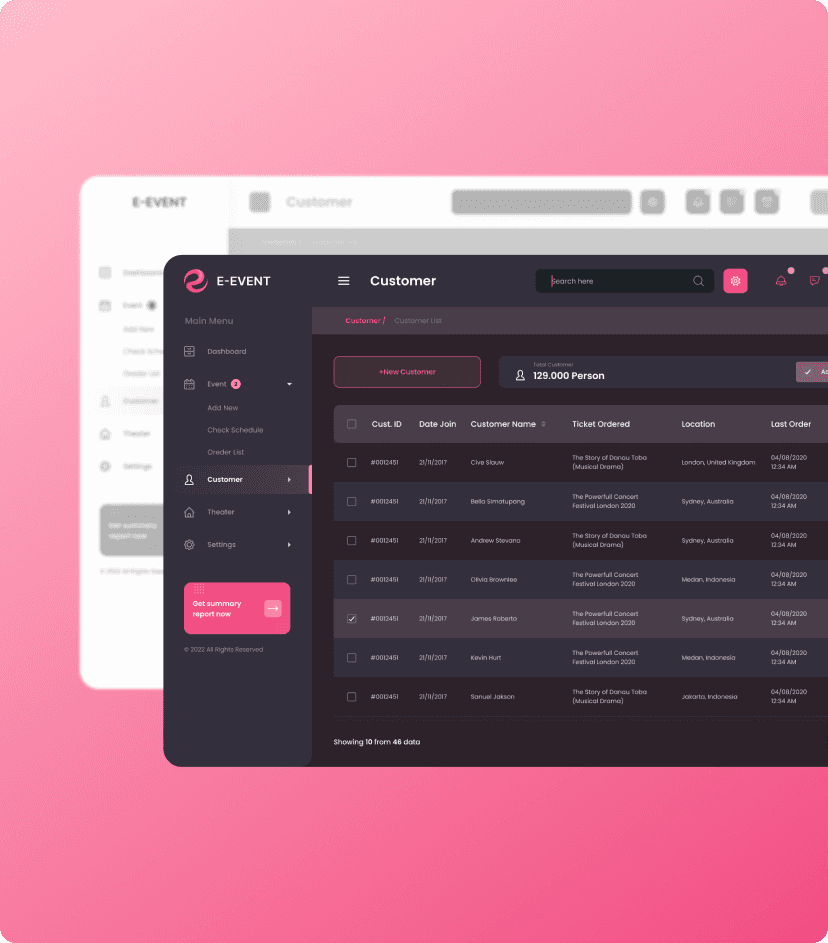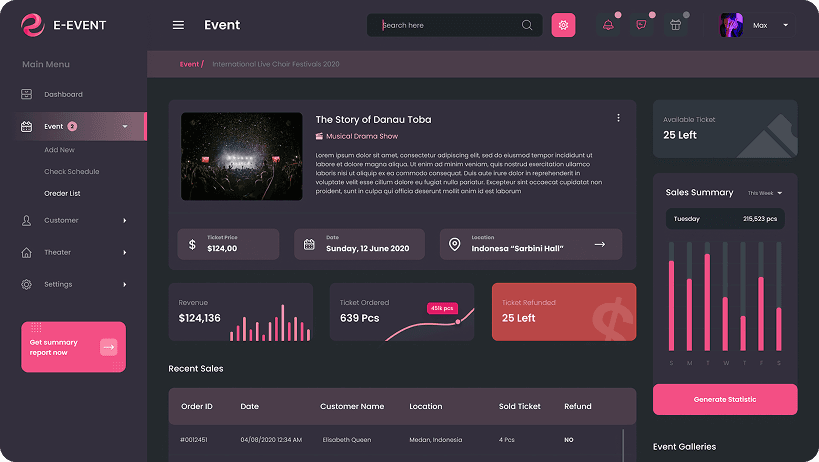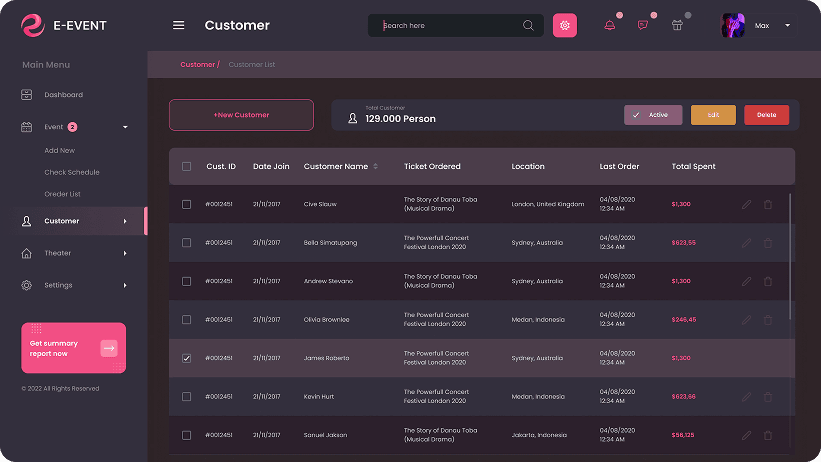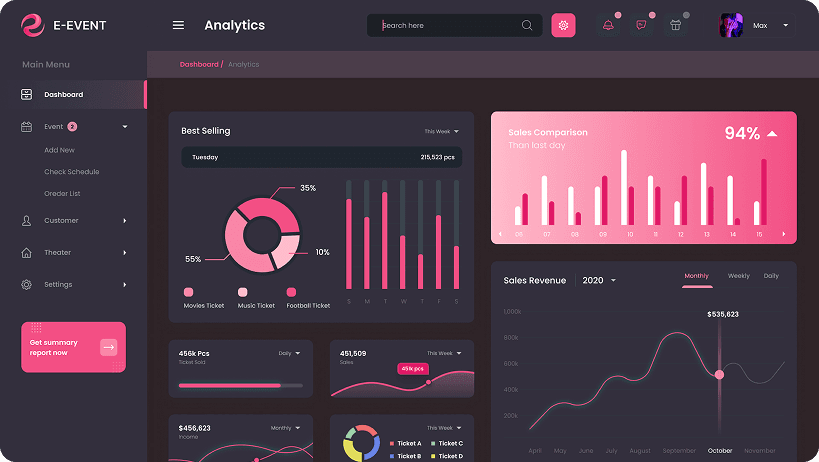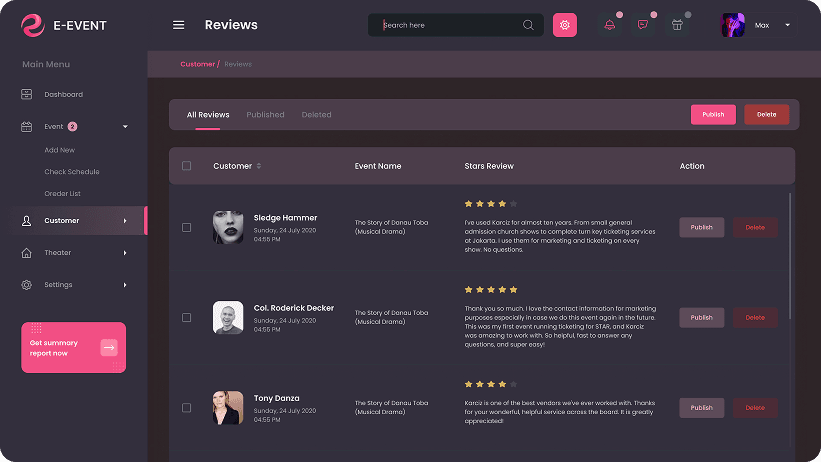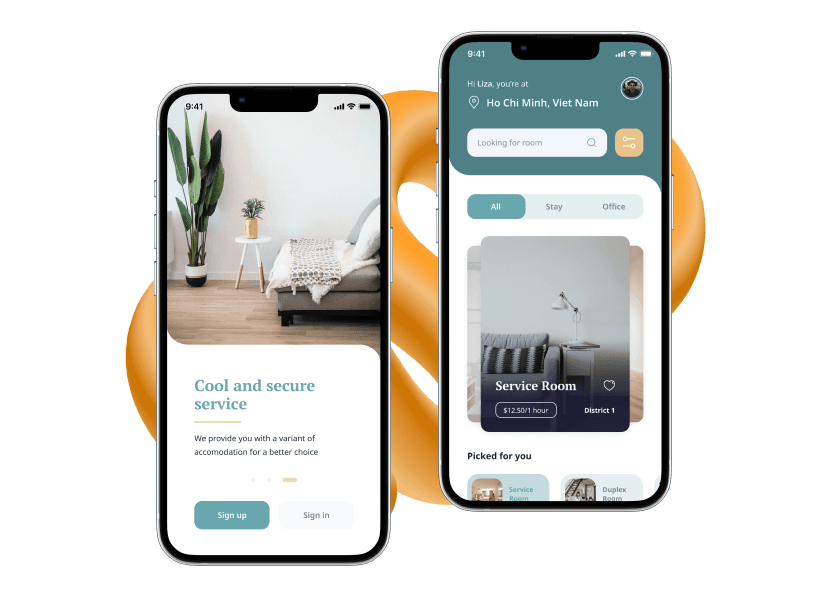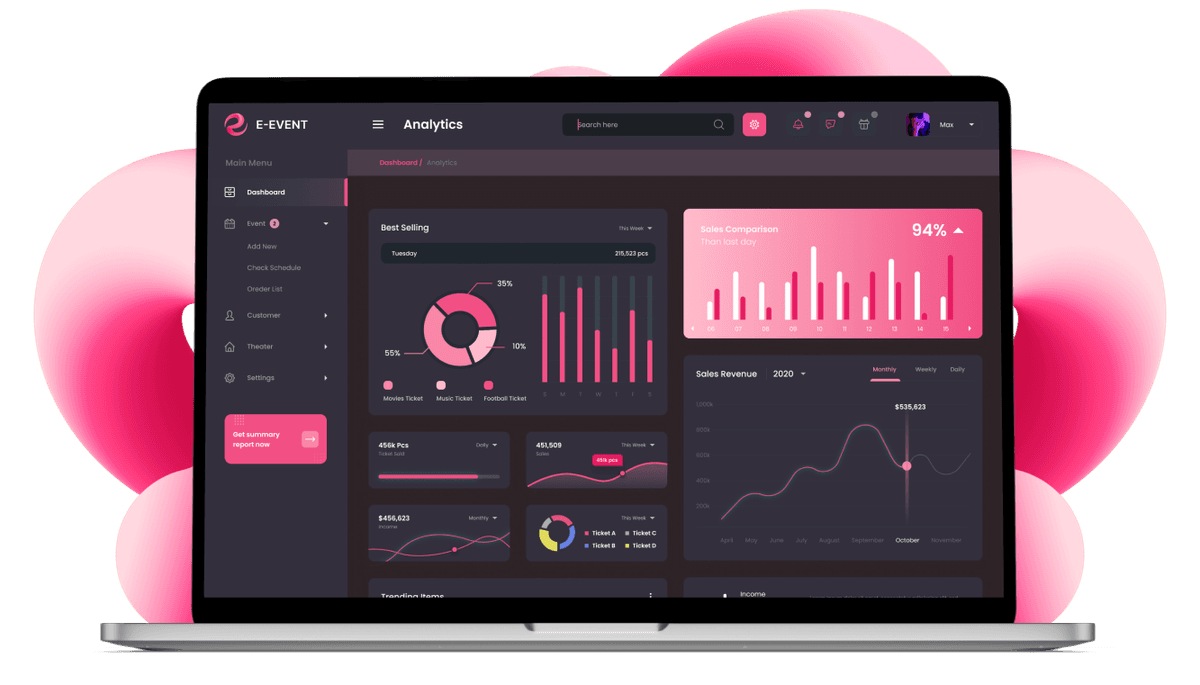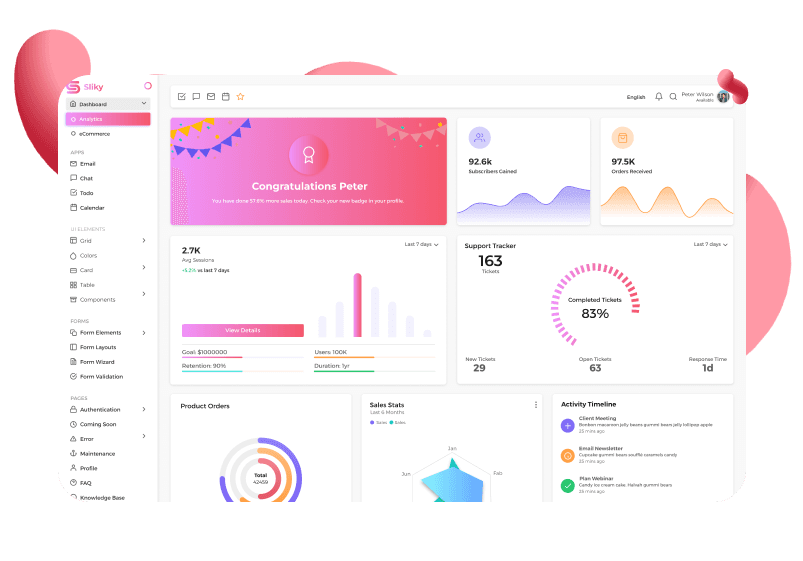
The design process commenced with a thorough research and discovery phase. We engaged in in-depth discussions with the client to fully comprehend his vision and specific requirements for the project. This phase also involved comprehensive competitor research within the ticket-selling industry. Such research allowed us to identify best practices in the sphere and potential areas for differentiation. Additionally, we conducted a user analysis to understand the needs and expectations of event organizers who would be using the CRM platform.

Leveraging the knowledge gleaned from the research and discovery phase, we transitioned to the wireframing stage. Here, we focused on crafting a visual representation of the dashboard's layout and functionality. This included defining the hierarchy of information, user flows for key tasks (such as tracking ticket sales or analyzing best-selling events), and establishing a clear information architecture to optimize user experience.

With a well-defined wireframe in place, we embarked on the UI design phase. This stage involved translating the UX concepts established in the wireframes into visually appealing and user-friendly interfaces. We prioritized clean aesthetics, clear data visualizations relevant to the ticket selling industry (e.g., sales charts, event calendars), and intuitive navigation to ensure a seamless user experience for event organizers interacting with the dashboard.

Recognizing the diverse range of devices event organizers might use to access the platform, we implemented adaptive design principles. This ensured the dashboard's optimal rendering and functionality across various screen sizes, from desktop computers to tablets and mobile devices. This adaptability caters to the on-the-go nature of event management, allowing organizers to monitor ticket sales and access crucial event data regardless of device.

To solidify the design and gather client feedback before development, we created a clickable prototype. This interactive prototype simulated the final dashboard functionality and allowed the client to experience the user flow firsthand. This phase proved invaluable in refining the dashboard's functionalities and ensuring it met the client's specific needs and expectations for event organizer data visualization and management within the CRM platform.

